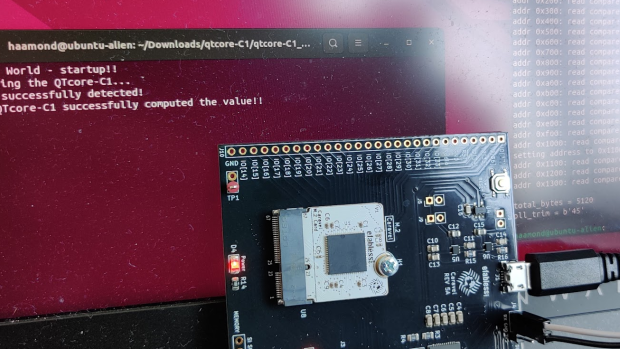From “Chip Chat” to “Chip In Hand”: NYU Tandon researchers fabricate the world’s first chip designed through conversations with an artificial-intelligence platform

Chip Chat fabricated chip. Photo credit: Hammond Pearce
NYU Tandon researchers have fabricated the world's first microchip designed through conversations with a Large Language Model (LLM) AI platform, a breakthrough that promises to help simplify and accelerate chip development.
In recent months, major chip design software companies including Synopsys, Cadence and NVIDIA announced they are pursuing new products to integrate natural language AI into semiconductor design flows, in a bid to make chip production as fast and efficient as possible. Startups like Rapid Silicon are also founded expressly around AI-generated chips.
The success of the NYU Tandon research team provides powerful “proof of concept” for those companies. Importantly, it also signals a step forward for other technology researchers and entrepreneurs who want to create new hardware but do not necessarily have the sophisticated technological skills generally required to design the chips that power those devices.
In the NYU Tandon project, researchers – led by Hammond Pearce, who completed a three-year stint at NYU Tandon in 2023 after serving as a postdoctoral associate and a research assistant professor there – designed the chip, named QTcore-C1, through back-and forth conversations with OpenAI’s GPT-4, a LLM that can understand and generate human language.
GPT-4 authored the Verilog code, a hardware description language (HDL) needed to explain the digital circuits and systems that make up the chip’s architecture. Normally writing HDL requires advanced technical skills that relatively few people have.
The researchers call their LLM-powered chip design technique “Chip Chat.”
The chip the researchers designed was sent to fabrication by Efabless – a creator platform where people can design, share, collaborate, fabricate and commercialize their own chips – as part of the prize awarded to the team when its Chip Chat submission won that company’s AI Generated Open-Source Silicon Design Challenge in June 2023.
The NYU Tandon team later presented Chip Chat in a paper at the Machine Learning for CAD (MLCAD) workshop in September 2023.
“Designing chips is normally time consuming, resource intensive, and dependent on the relatively few people with the necessary technical skills and experience,” said Siddharth Garg, institute associate professor at NYU Tandon and a member of the NYU Center for Cybersecurity and NYU WIRELESS, who works on the Chip Chat project. “Chip Chat is groundbreaking because it suggests a different future. It opens up the possibility that, say, a biologist with no prior expertise in chip design can bring to life their new idea in silicon. It's a powerful fuel to igniting a bigger, faster, safer and more democratic chip design environment, one in which more people can participate and more creative technology can emerge.”
The Chip Chat success builds on years of research at NYU exploring AI for HDLs like Verilog. Along with Pearce and Garg, Ramesh Karri, a professor of electrical and computer engineering and the co-founder and co-chair NYU Center for Cybersecurity and doctoral student Jason Blocklove are part of the Chip Chat research team.
“I have worked with LLMs for hardware since 2020 because I believe that they have an enormous potential to simplify, democratize, and accelerate hardware development,” said Pearce, currently an assistant professor at University of New South Wales Sydney School of Computer Science and Engineering, in a blog post detailing the Chip Chat project. “I’m really excited for what comes next.”







